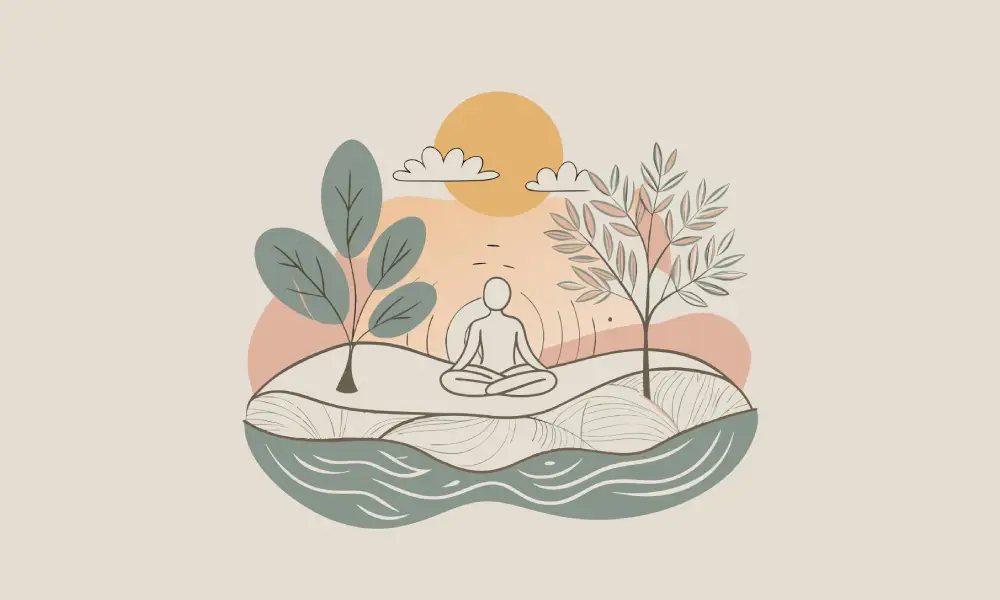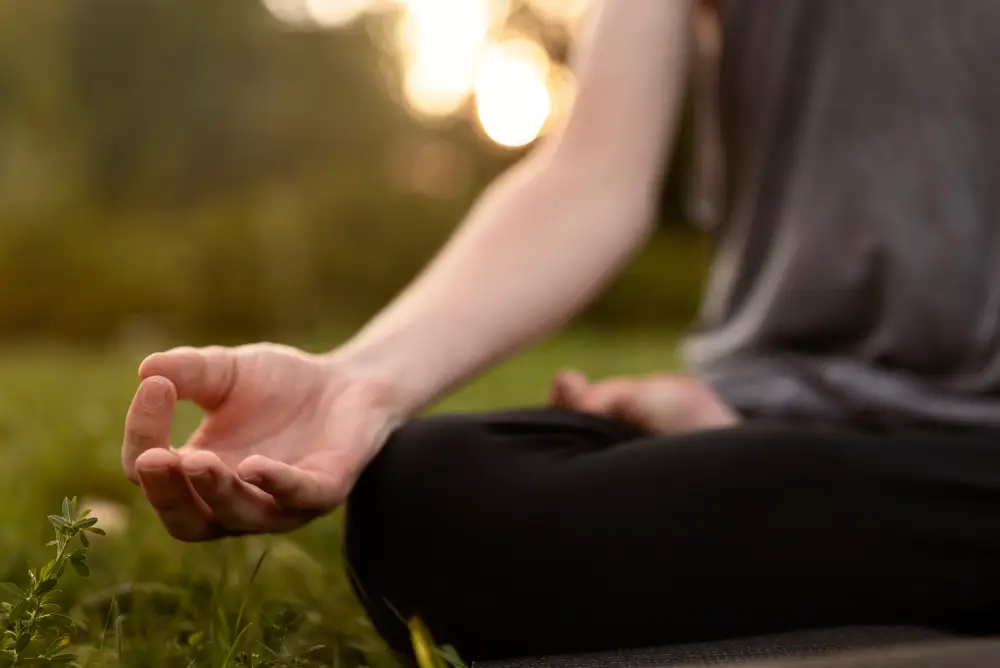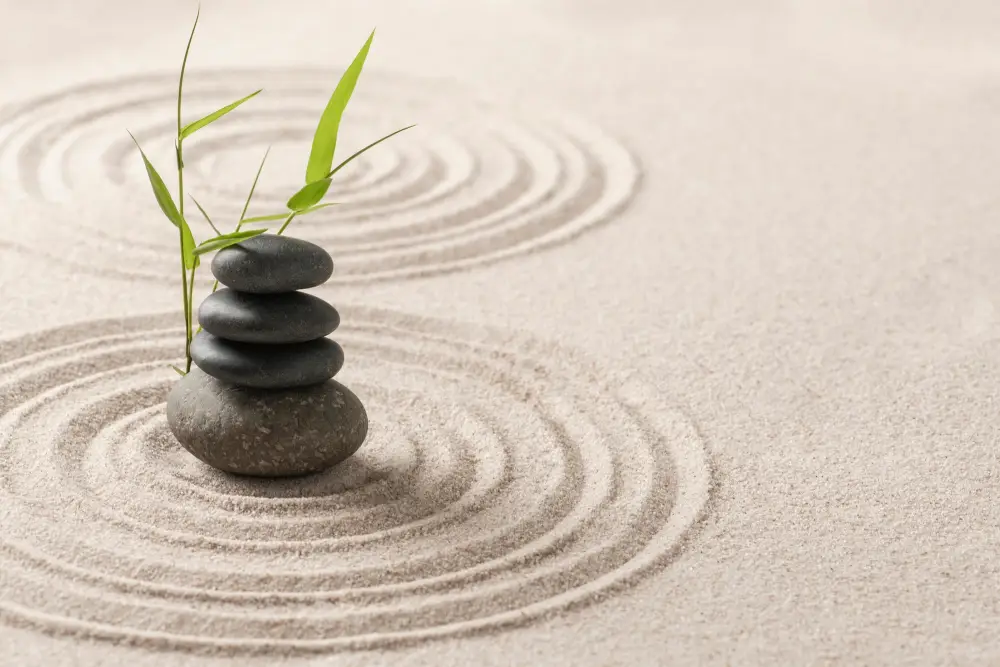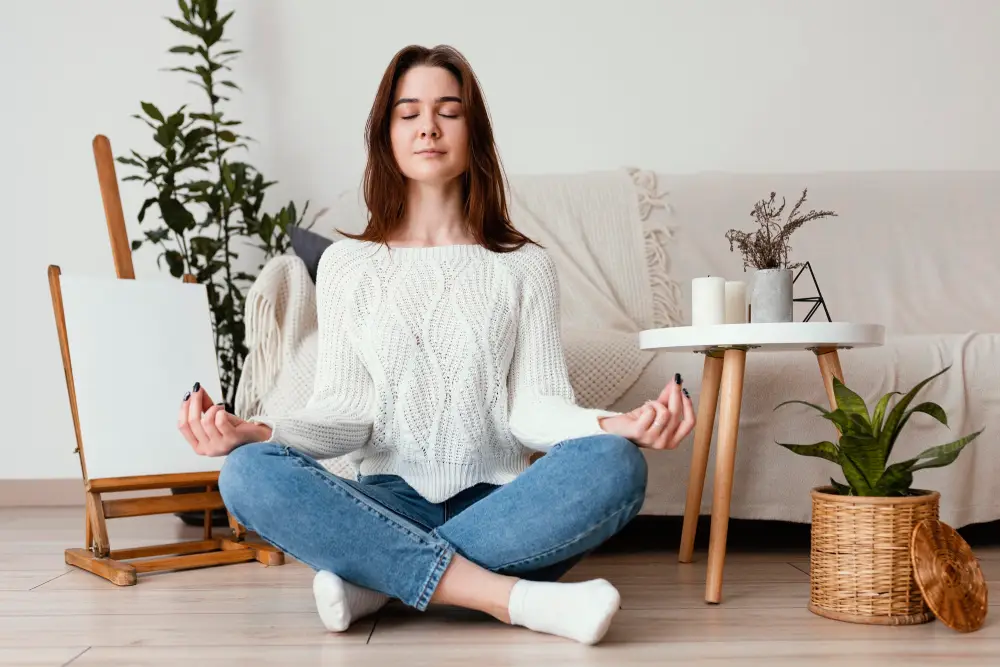In today’s stressful world, anxiety has become one of the most common mental health issues. Various factors, such as work pressures, social expectations, rapid life changes, and the overwhelming amount of daily information, contribute to increased anxiety levels in individuals. As a result, many people are seeking ways to manage and reduce this unpleasant state. One of the most effective and popular methods for coping with anxiety is mindfulness techniques.
Mindfulness means being fully aware and non-judgmental of the present moment. This technique helps individuals consciously observe their thoughts, feelings, and experiences without getting caught up in judgments or negative reactions. The roots of this concept can be traced back to Buddhist teachings, but in recent years, it has been recognized as an effective therapeutic approach in modern psychology. Mindfulness techniques play a significant role not only in reducing anxiety but also in improving quality of life, enhancing focus, and promoting mental and physical health.
Scientific research has shown that mindfulness practices lead to significant changes in brain activity and the nervous system. These changes result in decreased activity in areas related to stress and anxiety and increased focus and calmness. Consequently, individuals can distance themselves from rumination and unnecessary worries by concentrating on the present moment and accepting the realities of their lives, thereby gaining better control over their anxiety.
In this article, we will explore mindfulness techniques and their role in reducing anxiety, relying on scientific evidence to demonstrate how this method can serve as an effective tool in improving mental health.
What is Mindfulness?

Mindfulness, or awareness of the present moment, is a concept defined as the focus and full awareness of the present time and experiencing it in a non-judgmental way without emotional interference. This technique helps individuals to carefully observe their thoughts, feelings, and internal experiences, understanding how these elements automatically influence their behavior and mental states. By concentrating on the present moment, mindfulness allows individuals to escape cycles of anxiety, rumination, and stress, enabling them to live with greater calmness and awareness.
Roots and History of Mindfulness
As mentioned earlier, mindfulness has its roots in Buddhist teachings and was originally one of the fundamental principles of Buddhist meditation practices. In the Buddhist tradition, this technique was used to achieve a deep understanding of the nature of the mind and the reality of existence. However, in the twentieth century, the concept of mindfulness gradually entered the field of Western psychology. One of the key pioneers of this movement was Jon Kabat-Zinn, who developed a program called Mindfulness-Based Stress Reduction (MBSR) in the 1970s. This program was designed to reduce stress, anxiety, and chronic pain and has since become one of the recognized therapeutic methods in psychology.
Fundamental Concepts of Mindfulness

Mindfulness is based on three main principles:
. Focus on the Present Moment:
This principle emphasizes that individuals should direct their attention to the current moment and ongoing experiences. Thoughts related to the past and future create anxiety and stress; therefore, the goal of mindfulness is to detach from these thoughts and focus on what is happening right now.
. Non-Judgmental Acceptance:
Mindfulness teaches individuals to accept thoughts, feelings, and even unpleasant experiences without judgment. This means accepting negative feelings or challenges without resistance and without trying to change them. When troubling thoughts or feelings arise, the goal is not to eliminate them but to accept them and allow them to pass through the mind naturally.
. Intentional Awareness:
Mindfulness means being aware of each moment of life. This awareness allows individuals to be conscious of their thoughts, feelings, and bodies, and instead of reacting automatically to them, they can use their power of choice to respond.
Applications of Mindfulness
Mindfulness has a wide range of applications in today’s world and can be utilized in many areas of personal and professional life. Some of the most important applications include:
. Stress and Anxiety Management:
Mindfulness helps individuals reduce their stress and anxiety by decreasing repetitive and worrying thoughts.
. Improved Focus and Cognitive Performance:
Practicing mindfulness enhances individuals’ ability to concentrate on daily tasks and prevents distractions.
. Improved Interpersonal Relationships:
Mindfulness aids individuals in being more present and aware in their relationships, allowing for deeper connections through a better understanding of their own and others’ emotions and needs.
. Increased Quality of Life:
Those who practice mindfulness regularly tend to have a more positive outlook on their lives and experience fewer negative emotions or burnout.
What is Anxiety?
Anxiety is a natural response to environmental pressures and challenging situations. While this reaction can sometimes serve as a useful defensive tool, many individuals today suffer from chronic anxiety that disrupts their daily lives.
Symptoms of Stress and Anxiety

Anxiety is accompanied by a range of physical and psychological symptoms that can vary from person to person. Some of the most common symptoms of anxiety include:
Physical Symptoms:
- Severe heart palpitations
- Excessive sweating
- Shortness of breath
- Feelings of trembling or shaking
- Pain or pressure in the chest area
- Dry mouth
- Dizziness or lightheadedness
- Gastrointestinal issues like stomach cramps or diarrhea
- Headaches or pressure in the head
Psychological Symptoms:
- Persistent feelings of worry and fear
- Rumination (recurrent negative thoughts)
- Difficulty concentrating and focusing
- Irritability and restlessness
- Feelings of helplessness or inability to control situations
- Excessive worry about future events
- Nightmares or restless sleep
Behavioral Symptoms:
- Avoidance of specific situations or activities that may cause stress
- Extreme behaviors such as overeating or loss of appetite
- Decreased performance quality in work or studies
- Reluctance to engage in social interactions or self-imposed isolation
Causes of Anxiety
Anxiety can arise from various reasons, which can be categorized into biological and psychological factors:
- Biological Factors: Research has shown that anxiety can be influenced by genetic and hereditary factors. Individuals with a family history of anxiety or mental disorders are more likely to experience anxiety. Additionally, imbalances in brain chemicals, particularly serotonin and norepinephrine, can play a significant role in the onset of anxiety.
- Environmental Factors: Stressful conditions in daily life, such as financial problems, work pressures, family conflicts, and the loss of loved ones, can lead to anxiety. Sudden life changes, such as moving, separation, or divorce, or starting a new job, are also considered contributing factors to anxiety.
- Psychological Factors: Individuals with sensitive personalities or low self-esteem are generally more susceptible to anxiety than others. Additionally, those who have experienced traumatic events or psychological injuries in the past may develop anxiety due to the fear of reliving those experiences.
- Cognitive Factors: Negative thought patterns, such as catastrophizing problems, focusing on potential dangers, or exaggerating issues, can create a fertile ground for anxiety. These thoughts lead individuals to be constantly worried about the future and feel that they have little control over their lives.
Mindfulness in Managing Anxiety

Mindfulness is recognized as an effective method for reducing anxiety. Scientific research has shown that this technique leads to changes in brain function and the nervous system, resulting in decreased anxiety. Some of these scientific mechanisms include:
- Decreased Amygdala Activity: The amygdala is a part of the brain responsible for emotional responses to stress and threats. In individuals with anxiety, the amygdala becomes overactive, leading to more intense anxiety reactions. Mindfulness practices have been shown to reduce amygdala activity, thereby decreasing the severity of anxiety responses.
- Increased Prefrontal Cortex Activity: This part of the brain is responsible for logical decision-making and emotional regulation. Mindfulness enhances the activity of the prefrontal cortex, helping individuals respond to stressful situations calmly and thoughtfully rather than emotionally.
- Balancing the Autonomic Nervous System: The autonomic nervous system has two parts: the sympathetic (responsible for “fight or flight” responses) and the parasympathetic (responsible for relaxation and returning the body to a calm state). In anxiety situations, the sympathetic system becomes activated, preparing the body to face threats. Mindfulness practices help balance this system by increasing parasympathetic activity, promoting a sense of calmness and reducing stress.
- Reduction of Rumination: Mindfulness teaches individuals to observe their thoughts without judgment and avoid engaging in rumination. This technique helps decrease repetitive and worrying thoughts that are primary contributors to anxiety.
- Decreased Production of Stress Hormones: Cortisol is one of the main hormones associated with stress. Research has shown that individuals who regularly practice mindfulness exercises have lower cortisol levels. This reduction in stress hormones leads to decreased anxiety and an increased sense of calm.
Due to its positive effects on the brain and body, mindfulness has become one of the popular methods for managing anxiety and stress. With consistent practice, individuals can gain more control over their thoughts and emotions, leading to a more peaceful life.
Mindfulness Techniques for Reducing Anxiety

Mindfulness includes various techniques that help individuals reduce stress and anxiety by focusing on the present moment and employing specific methods. This section thoroughly explains practical techniques such as meditation, deep breathing, gratitude, group discussions, walking, yoga, and body relaxation.
1- Meditation
Meditation is one of the most widely used and effective mindfulness techniques for reducing anxiety. In this practice, individuals sit in a calm and still position, focusing their attention on a specific object or aspect (such as their breath or environmental sounds).
- How to Practice: First, sit in a quiet place and close your eyes. Focus your attention on your breathing; consciously follow each inhalation and exhalation. If thoughts arise, instead of fighting them, simply observe them and return your focus to your breath.
- Effect of Meditation on Anxiety: Meditation promotes relaxation of the nervous system and decreases activity in brain areas associated with stress. It also helps individuals observe their thoughts and feelings without worry or judgment.
2- Deep Breathing Techniques
Deep breathing is one of the simplest and most effective mindfulness methods for reducing anxiety. This technique helps to relax the nervous system and lower stress hormone levels.
- How to Practice: Sit or lie down in a comfortable position. Place one hand on your chest and the other on your stomach. Gently and deeply inhale, allowing your stomach to rise as your lungs fill completely. Then, exhale slowly through your mouth. Repeat this process several times.
- Effect of Deep Breathing on Anxiety: Deep breathing activates the parasympathetic nervous system, which is responsible for calming the body. This technique helps lower heart rate, reduce blood pressure, and create a sense of relaxation.
3- Gratitude
Gratitude is a simple yet powerful mindfulness technique that encourages individuals to focus on the positive aspects of life and move away from negative, stress-inducing thoughts.
- How to Practice: Dedicate time each day to think about things that bring you joy or satisfaction in your life. These can be big or small. You can even keep a gratitude journal, noting three to five things each day that you are grateful for.
- Effect of Gratitude on Anxiety: Gratitude helps shift individuals’ focus from negative thoughts and worries to appreciating the positive aspects of life. This change in thought patterns can lead to reduced stress and anxiety.
4- Group Discussions
Participating in group discussions allows individuals to share their experiences and feelings with others, benefiting from social support. This technique can be part of a support group or mindfulness practice sessions.
- How to Practice: In group sessions, individuals take turns expressing their feelings, concerns, and experiences. Group members listen attentively and strive to support each other without judgment or criticism. These sessions are usually led by a facilitator.
- Effect of Group Discussions on Anxiety: This technique helps individuals express their feelings and realize they are not alone. Strong social support from others can help reduce feelings of isolation and anxiety.
5- Walking
Walking, especially in nature, can serve as a form of moving meditation. This mindfulness technique fosters a connection between the mind and body, helping to reduce anxiety.
- How to Practice: During your walk, be aware of each step you take and pay attention to how your body moves. Listen to the sound of your footsteps, feel the breeze or sunlight on your skin, and enjoy observing your surroundings while trying to focus your thoughts on the present moment.
- Effect of Walking on Anxiety: Walking increases blood flow and produces endorphins, which help improve mood and reduce anxiety. Additionally, connecting with nature and breathing fresh air promotes mental relaxation and reduces stress.
6- Yoga

Yoga is a combined technique that includes breathing exercises, physical movements, and meditation. This practice not only affects the body but also helps to create mental calmness and reduce anxiety.
- How to Practice: Yoga helps individuals focus on their bodies and breath through various movements and breathing exercises. Different yoga poses, such as child pose or mountain pose, aid in achieving relaxation.
- Effect of Yoga on Anxiety: Yoga combines physical and mental exercises to reduce muscle tension and increase blood circulation. Focusing on breath and body movements alleviates stress and promotes mental balance.
7- Body Relaxation
Body relaxation, or body scanning, is a mindfulness technique that encourages individuals to gradually relax each part of their body. This technique helps reduce physical and psychological tension.
- How to Practice: Sit or lie down in a comfortable position. Starting from your toes, gradually focus on each part of your body. Pay attention to the sensations in each area, and if you feel any tension, release it. Continue this process gradually up to your head.
- Effect of Body Relaxation on Anxiety: This technique helps alleviate physical tension caused by anxiety and increases overall relaxation of the body and mind. Gradual muscle relaxation helps individuals establish a better connection with their bodies, reducing both physical and psychological tension.
These mindfulness techniques, with consistent practice, can effectively reduce anxiety and stress, improving individuals’ quality of life.
Why Mindfulness?

In recent decades, mindfulness has gained significant attention from researchers and psychologists. This technique is recognized as an effective method for reducing anxiety, stress, and improving mental health, with substantial scientific evidence demonstrating its positive impacts in various studies.
These studies collectively indicate that mindfulness techniques, including meditation, deep breathing, gratitude, walking, yoga, and body relaxation, have scientifically proven positive effects on reducing anxiety. Given the extensive evidence and positive research outcomes, these techniques can serve as effective tools in managing and reducing anxiety.
Challenges and Limitations of Mindfulness for Reducing Anxiety
Despite the positive impacts and numerous scientific evidence regarding the effectiveness of mindfulness techniques in reducing anxiety, these methods, like any approach, face challenges and limitations. Being aware of these challenges can help individuals practice these techniques with more realistic expectations and prepare for potential difficulties. This section addresses the main challenges and limitations in using mindfulness.
1. Need for Practice and Consistency
One of the biggest challenges of mindfulness is the need for regular practice and consistency. Many people who are new to this approach expect immediate and rapid results. However, mindfulness is a skill that requires consistent and long-term practice to observe its positive effects.
For many, sticking to a regular mindfulness routine can be challenging. Busy lifestyles, lack of time, or difficulty focusing can hinder daily practice. Without continuous practice, individuals may not fully benefit from mindfulness.
Creating a regular practice schedule, dedicating short but consistent time slots (e.g., 10 to 15 minutes a day), and using apps or support groups can help maintain consistency.
2. Feelings of Frustration or Inefficacy When Starting Out
For many, beginning mindfulness practice can be accompanied by frustration. Individuals who have just started meditating or similar practices may find it difficult to reach a state of calm immediately or realize that their minds are overly active. This can lead to feelings of inefficacy and frustration, possibly causing them to abandon the practice early.
It is recommended that individuals give themselves time and adjust their expectations. Mindfulness requires practice, and its effects become evident gradually. Accepting that the mind is naturally active is one of the key principles of mindfulness.
3. Lack of Familiarity with Techniques and Need for Guidance
Many individuals may struggle with properly executing techniques when they first encounter mindfulness. Without adequate knowledge or proper guidance, they may not perform the techniques correctly or mistakenly believe they are ineffective.
Some mindfulness techniques, like meditation or yoga, may require initial guidance. The absence of appropriate guidance can lead to incorrect practice and lack of effectiveness.
Utilizing reputable resources, attending educational classes, or consulting with a mindfulness coach can help individuals learn the techniques correctly and benefit from them.
4. Initial Resistance to New Techniques
Individuals who are introduced to mindfulness for the first time may exhibit resistance to its techniques. For some, sitting in silence or focusing on the breath may be associated with uncomfortable feelings. Additionally, some may feel doubt or skepticism about these methods due to cultural or religious beliefs.
Initial resistance to new approaches can hinder a positive experience with mindfulness practice. Some may feel that these techniques are unfamiliar or unnatural to them.
Gradual acceptance and starting with simpler practices can help individuals gradually get accustomed to mindfulness techniques. Furthermore, learning more about the principles and scientific benefits of mindfulness can help reduce individuals’ doubts.
5. Lack of Access to Resources or Suitable Environment
Practicing mindfulness requires a calm and distraction-free environment. However, for many individuals, accessing such a space at home or work may be challenging. Additionally, some may be unable to attend classes or access suitable educational resources due to time constraints or other limitations.
Creating a calm environment at home, even for a short duration (e.g., 10 minutes), or using mindfulness practice apps can help individuals incorporate these techniques into their daily lives. Walking or utilizing open spaces can also serve as good alternatives for practicing mindfulness.
6. Potential for Amplifying Negative Thoughts in Specific Cases
For some individuals, focusing on negative thoughts or feelings during mindfulness practice may exacerbate these thoughts. Particularly for those suffering from severe anxiety or depression, practicing meditation or similar techniques may lead to increased negative emotions.
In such cases, it is recommended that individuals practice under the guidance of a psychologist or professional coach. Combining mindfulness with psychotherapy or medication can also help mitigate this challenge.
7. Lack of Alignment with Specific Needs
While mindfulness is effective in reducing anxiety and stress in many cases, it may not be suitable for everyone or all types of anxiety. In some instances, individuals may require psychotherapy or medication, and mindfulness alone may not be sufficient for them.
Using mindfulness as a complement alongside other psychological treatments can yield better results. It is advisable for individuals to consult with a specialist and benefit from combined therapeutic programs.
Considering these challenges and limitations, mindfulness remains one of the powerful tools for reducing anxiety. Awareness of these limitations helps individuals maintain more realistic expectations and enables them to make the best use of these techniques with appropriate guidance.
Conclusion

Mindfulness is recognized as an effective and scientific method for reducing anxiety and stress. These techniques, which focus on the present moment and non-judgmentally accepting experiences, help individuals gain better control over their thoughts and emotions. Through various practices such as meditation, deep breathing, gratitude, yoga, and walking, individuals can experience greater calmness and significantly reduce their anxiety. We hope this article has been helpful to you.


